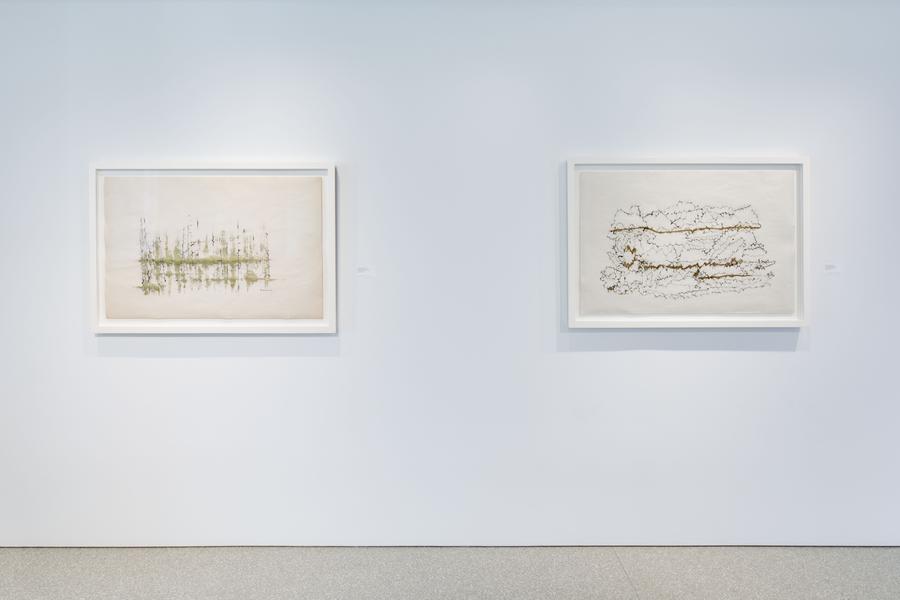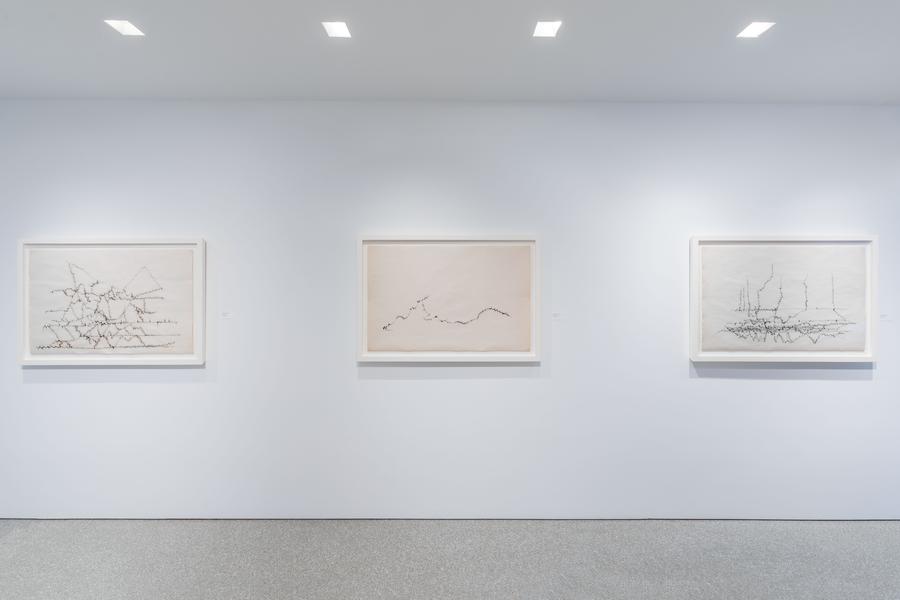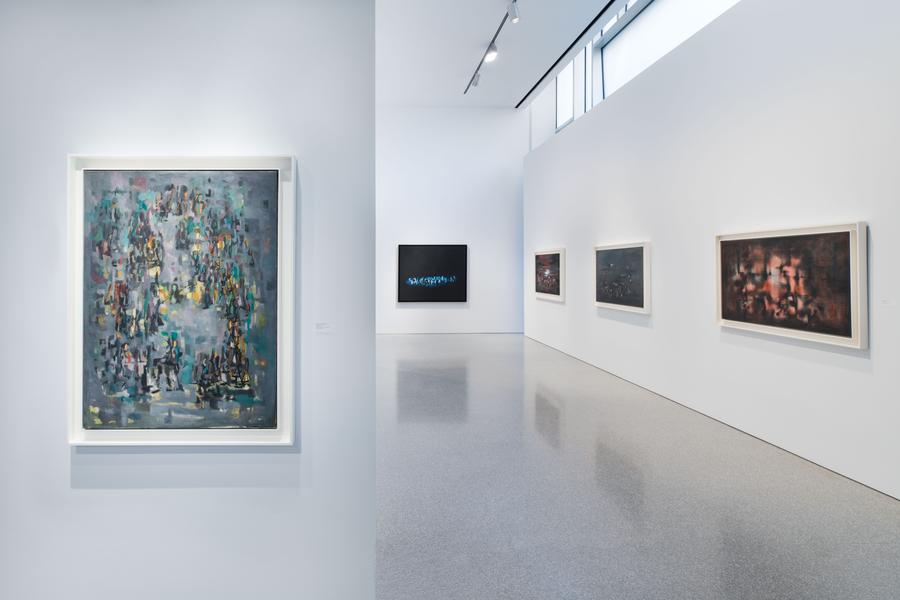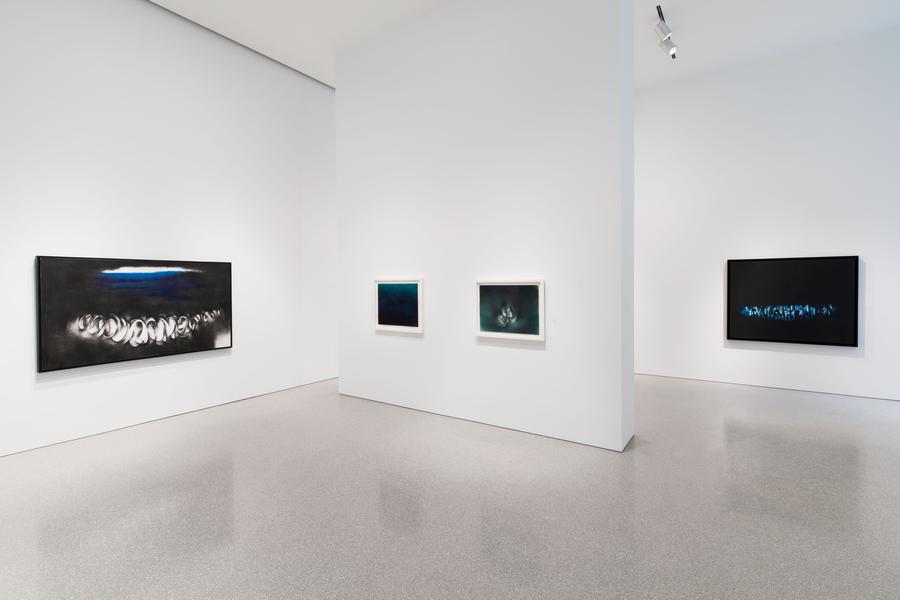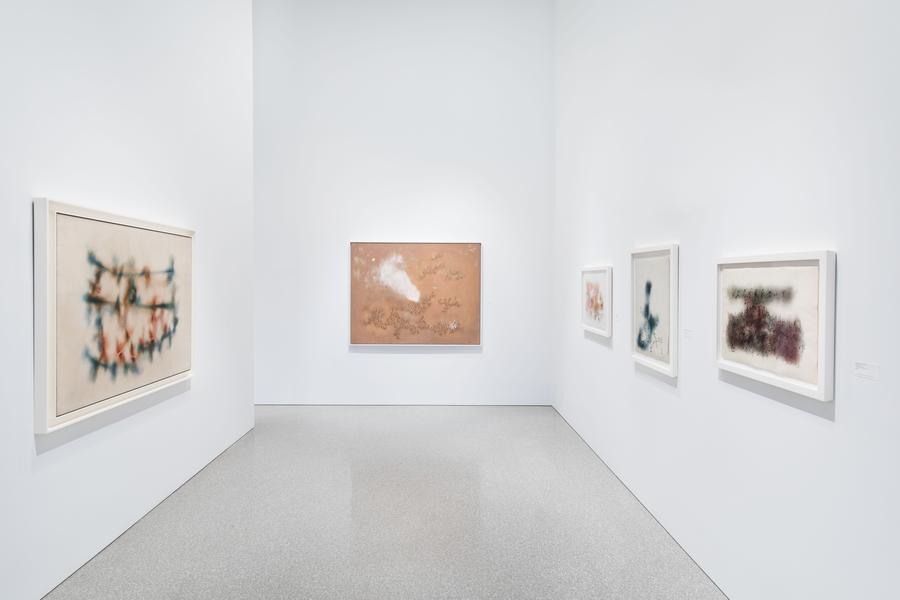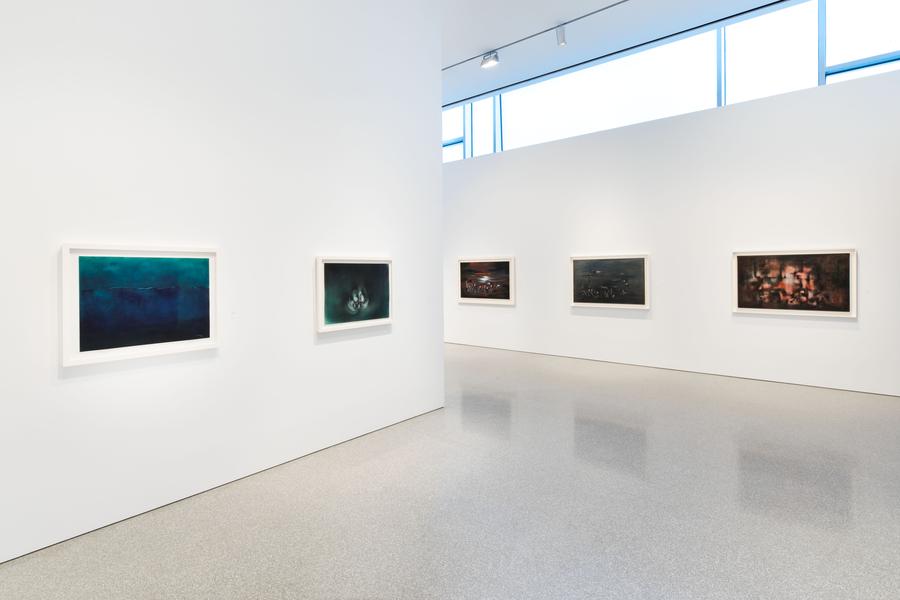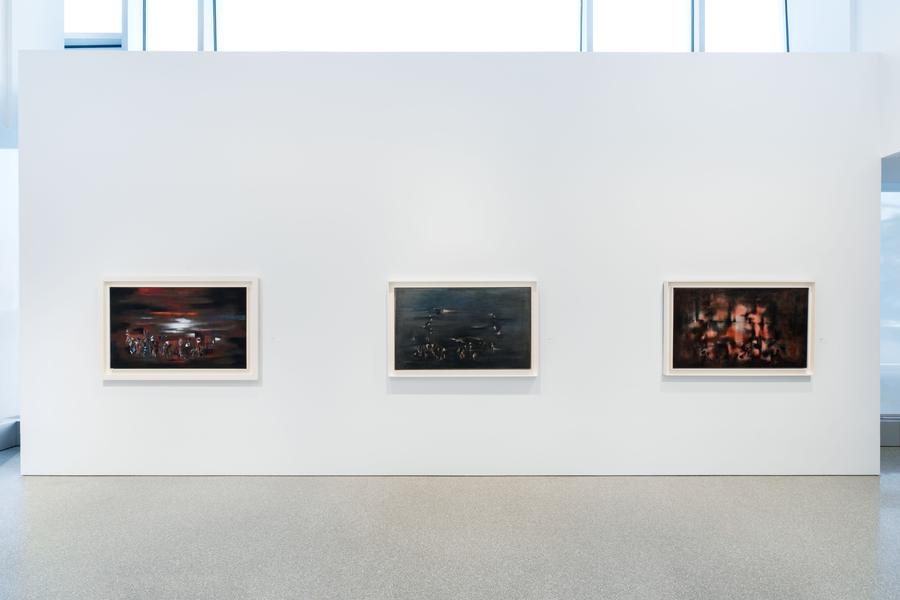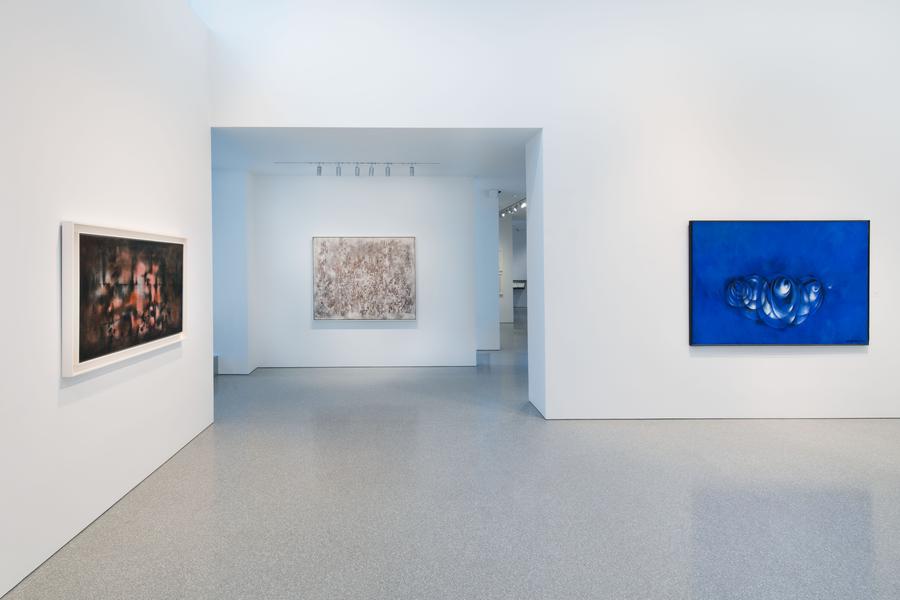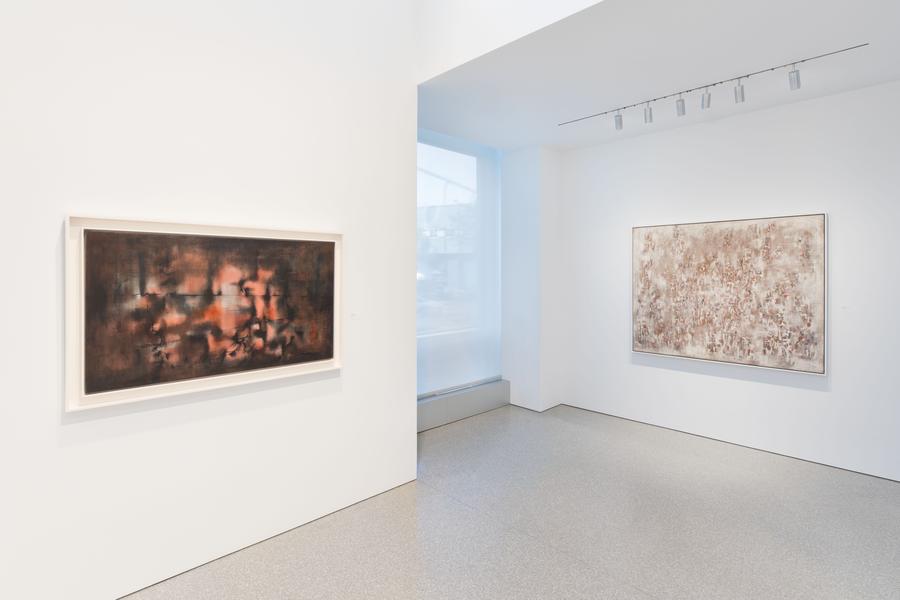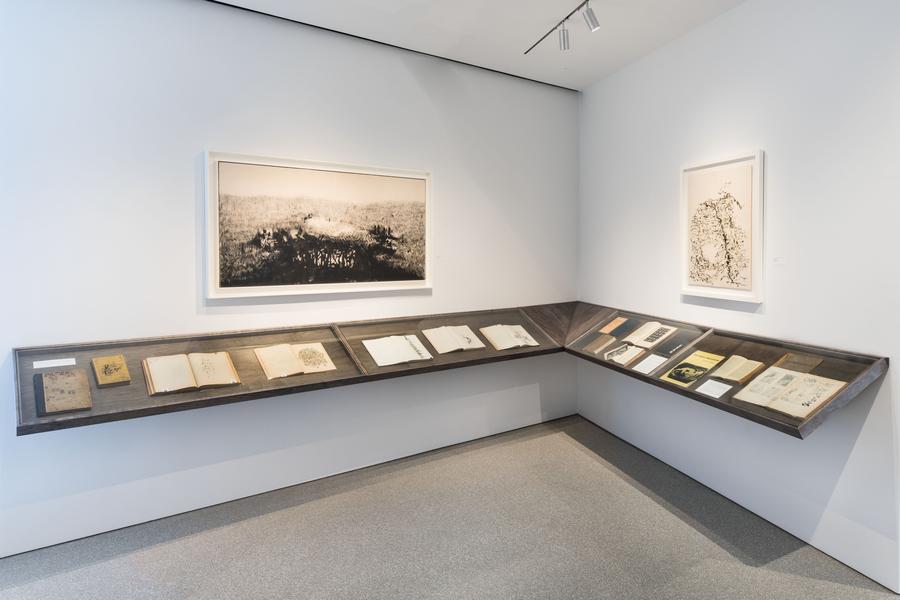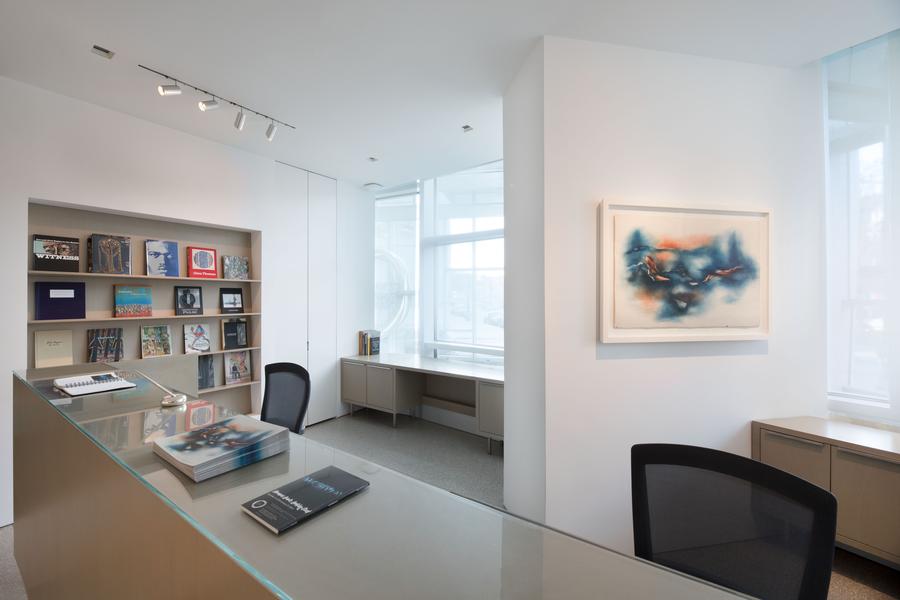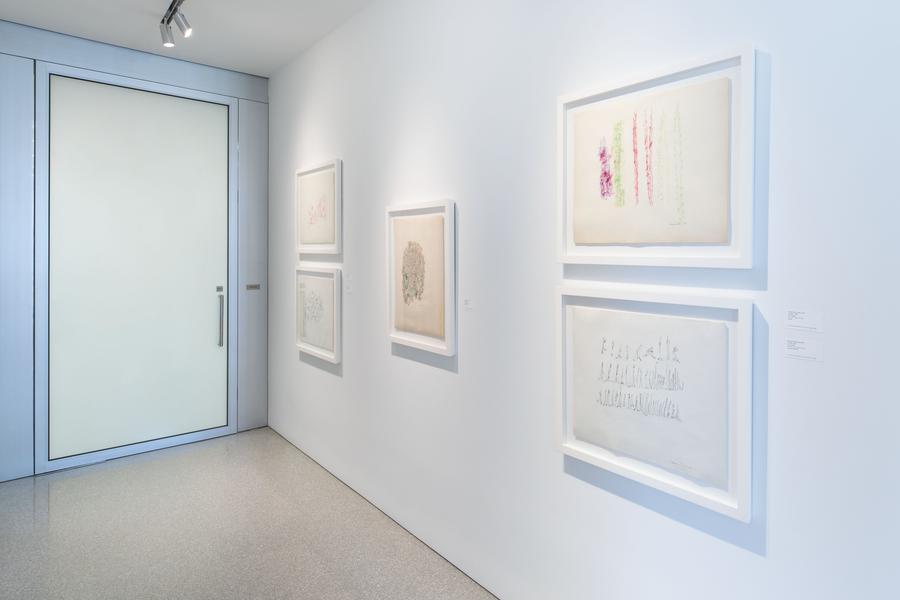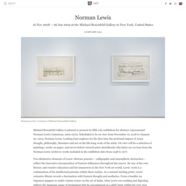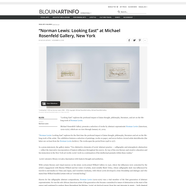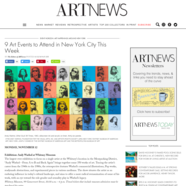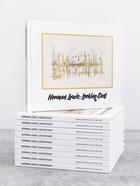(NEW YORK, Nov 16, 2018) Michael Rosenfeld Gallery is pleased to present its fifth solo exhibition for abstract expressionist Norman Lewis (American, 1909-1979). Scheduled to be on view from November 16, 2018 to January 26, 2019, Norman Lewis: Looking East explores for the first time the profound impact of Asian thought, philosophy, literature and art on the life-long work of the artist. On view will be a selection of paintings, works on paper, and never-before-viewed artist sketchbooks (the latter are on loan from the Norman Lewis Archive); works included in the exhibition date from 1948 to 1974.
Two distinctive elements of Lewis’ abstract practice – calligraphic and atmospheric abstraction – reflect the innovative incorporation of Eastern influences throughout his oeuvre. By way of his own literary and creative education and his immersion in the New York art world, Lewis’ work is a continuation of his intellectual pursuits within these realms. As a natural starting point, Lewis’ extensive library reveals a fascination with Eastern thought and aesthetics. From a booklet on Japanese puppets to multi-volume tomes on the art of India, what Lewis was reading and digesting reflects the immense range of inspiration that he encountered on a daily basis within his very own library. Many avant-garde artists of Lewis’ generation looked to Asian thought and aesthetics “to forge an independent artistic identity that would define the modern age – and the modern mind – through a new understanding of existence, nature, and consciousness.”[1] Artists in Lewis’ circle, amongst them Mark Rothko, David Smith, Ad Reinhardt, and Adolph Gottlieb, drew ideas from Eastern religions, Zen Buddhism and Carl Jung’s theories on the unconscious.
Predating this trend, early modernist artists looked to writings on Chinese and Japanese art by Ernest Fenollosa, who in turn influenced Arthur Wesley Dow, author of Composition (Doubleday Page & Company, 1923, originally published 1899), a manual for students and teachers which “introduced the Japanese approach to abstraction to the New York avant-garde.”[2] Lewis’ personal copy of the book fittingly includes doodles of his own, sketched after exercises illustrating principles of line and composition. Like many prominent abstract expressionists, Lewis was also reading and digesting books about Chinese art and calligraphy, including Lucy Driscoll and Kenji Toda’s Chinese Calligraphy (The University of Chicago Press, 1935), with its informative illustrations and passages explaining the basics of calligraphic content, form and technique, and Chiang Yee’s The Chinese Eye: An Interpretation of Chinese Painting (Frederick A. Stokes Co., 1937). These seminal books, along with other influential selections from Lewis’ vast library, will be on view in the exhibition.
With these literary and visual sources on his mind, Lewis joined Willard Gallery in 1946, where these influences were cemented by the artist’s engagement with Marian Willard and her roster of artists, most notably Mark Tobey, whose calligraphic style was influenced by travels to and studies in China and Japan, and Genichiro Inokuma, with whom Lewis developed a close friendship and dialogue and who stated that Willard handled artists with an “oriental feeling.”[3] Inokuma lived in New York from 1955 to 1975 and was a familiar presence in abstract art circles, exhibiting his calligraphic abstractions in ten one-man exhibitions at the Willard Gallery. Inokuma made an impression on Lewis and did much to reinforce his admiration of Asian art.
Lewis’ first solo exhibitions at the gallery were held in 1949 and 1950, and reviews of his work from the time consistently described Lewis’ work as delicate, lyrical and poetic – adjectives with strong ties to historic Chinese and Japanese art. Indeed, as early as 1950, a New York Times review of his work reflected the visual connection with an Eastern aesthetic: “There is an almost-Chinese finesse in the ways in which he indicates a flowering bush or hills at sunset.” Work from the 1950s increasingly reflected the calligraphic abstraction that cemented his reputation and throughout the decade, other critics noted that his works inspired by nature reflected “a tour-de-force of chinoise delicacy” (ARTnews, November 1954) and an “[evident] kinship with Oriental painters.” (The New York Times, February 1957).
In addition to artists in her circle, Willard’s own interests for the gallery’s curriculum were instrumental to Lewis’ artistic development as he continued to work in his own unique abstractionist vocabulary. A founding member and long-time trustee of the Asia Society, Willard “was one of the art dealers who played a significant role in the turn of American abstraction to Asian themes and was perhaps the most consistent champion of abstractionists with Asian interests.”[4] She surrounded herself with a group of artists and writers whose interests in Eastern cultures mirrored her own. These ties swirled around Lewis. In 1952, Willard’s friend Nancy Wilson Ross, a Buddhist scholar and expert on Eastern religions, wrote to Lewis suggesting possible titles for his paintings, related to celestial bodies and astronomy.[5] Lewis’ atmospheric and calligraphic compositions of this time reflect these spiritual and visionary themes.
In addition, thematic exhibitions organized by Willard while Lewis was in the gallery’s stable included surveys of Japanese screens (1954, 1956, 1960), Indian miniatures (1957) and The Heroic Encounter (1958), an exhibition conceived by photographer, writer and social activist Dorothy Norman, which presented universal and “mythmaking” symbols throughout Eastern and Western art historical traditions. In his personal copy of the catalogue, Lewis’ interest in concepts from the I Ching are evident and other publications from his library further reflect an interest in Chinese philosophy, including those expounding on Confucian and Taoist thought. Further throughout his library, Willard’s imprint is readily felt: for example, the book Nature, Man, and Woman by British philosopher Alan Watts, who popularized Eastern philosophy in the West, was gifted by Willard to Lewis for Christmas in 1958. Lewis’ interests were encouraged by Willard’s own, whose gifts of inscribed books throughout the years display a dealer-artist relationship based on cultural enrichment.
Norman Lewis: Looking East will be accompanied by a fully-illustrated catalogue with new scholarship by Andrianna Campbell and Tetsuya Oshima, Ph.D., Associate Professor at Graduate School of Integrated Arts and Sciences, Hiroshima University.
About Norman Lewis
Known for his calligraphic abstract compositions, Norman Lewis (1909-1979) was a vital member of the first generation of abstract expressionists. He was the sole African American artist of his generation who became committed to issues of abstraction at the start of his career and continued to explore them throughout his lifetime. Lewis’ art derived energy from his vast interests in music – both classical and jazz - as well as nature, ancient ceremonial rituals, and social justice/equality issues central to the civil rights movement.
A native of New York City, Norman Wilfred Lewis was born to St. Kitts immigrants Diana and Wilfred Lewis. The Lewis family lived in Harlem, and as a youth, Lewis held various jobs throughout his schooling but knew he wanted to be an artist from the age of ten. In 1929, Lewis found work as a seaman on a freighter and spent several years traveling throughout South America and the Caribbean, meeting local people and witnessing firsthand the poverty of Bolivia, Uruguay, Jamaica, and elsewhere. Upon his return to the United States, Lewis settled back in New York City.
In the early 1930s, Lewis met artist and educator Augusta Savage, who ran an arts school in Harlem and was involved with lobbying the Works Progress Administration (WPA) to hire more black artists. From 1933 to 1935, he took classes at the Savage School of Arts and Crafts and attended Columbia University Teachers College. Lewis’s deep commitment to social and economic equality led him to join the Artists Union, which was organized to protect the rights of artists and workers. A regular at 306, a cultural center in Harlem that attracted musicians, writers and young artists, Lewis was a co-founder of the Harlem Artists Guild (HAG) in 1935. In 1936, he began working for the WPA’s Federal Arts Project, teaching classes. Lewis’ art at the time was grounded in social realism and focused on the lives and struggles of black Americans, but in the 1940s, he began to explore abstraction. While he remained active in the struggle for civil rights throughout his life, Lewis was skeptical about the power of art to effect change, explaining in a 1968 Archives of American Art interview with Henri Ghent, “one of the things in my own self education, was the discouraging fact that painting pictures of protest didn't bring about any change.”


